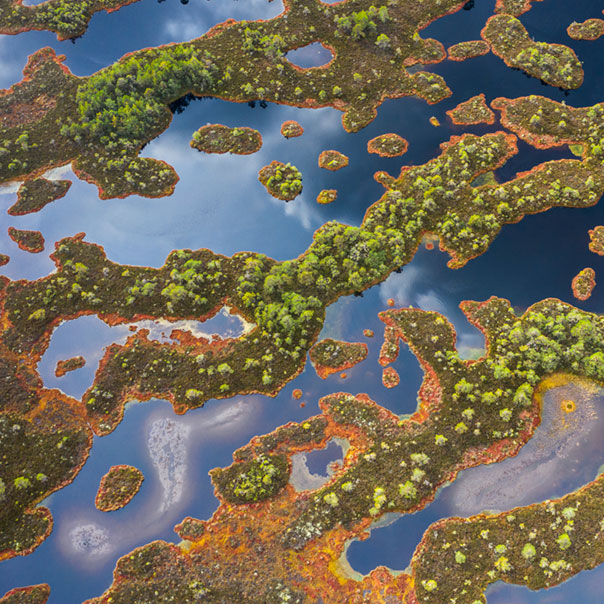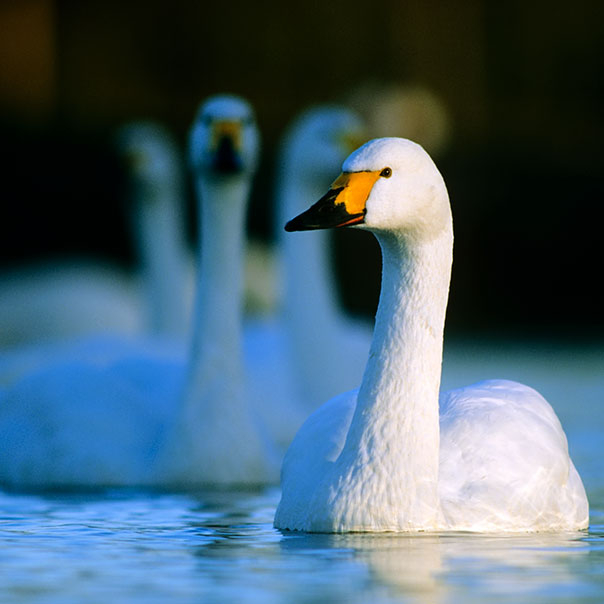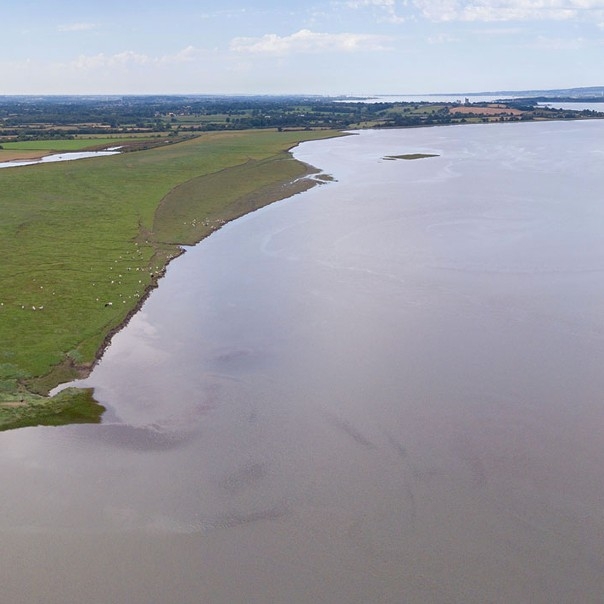Estuaries
Home to flocks of birds, our estuaries are ever changing, as dynamic as the tides that shape them.
Explore the vast beauty of the UK’s estuaries, a world teeming with wetland wildlife, created where river and ocean meet.
As the winter sun treks low across the horizon, the estuary reveals the beauty of its muted world, a moody canvas of blues and greys cut with slithers of shining silver. The haunting call of the curlew drifts across exposed mud flats that shift in the currents and stretch from water to land. Marsh harriers soar overhead, sending up clouds of waders into the wintry skies, while the smell of earthy mud mixes with that of salty foam.
This is a dynamic place of eternal ebb and flow, where saltwater ocean meets freshwater river and sediment rich mud provides one of nature’s greatest feasts.
The estuary’s distinctive smell comes from the microorganisms that live in the muddy sediment that’s exposed at low tide.
Introduction to estuaries
What is an estuary?
Estuaries are found on the coast, where a body of water is surrounded by land, but open to the sea on one side, with rivers or streams flowing into it. Where the tides bring in the salty sea water and it mixes with the freshwater rivers, the water becomes brackish or slightly salty.
Where can you find estuaries?
Despite its relatively small size, Great Britain is uniquely gifted with estuaries. The Severn Estuary is one of the most important. It has the largest tidal range in Europe, a vast array of wildlife, a rich cultural heritage and a wild and beautiful landscape. It’s a globally important site for nature which is why WWT’s founder, Sir Peter Scott decided to set up WWT Slimbridge on its banks in 1946.
From WWT Steart on the Severn Estuary to WWT Caerlaverock on the Solway Firth, and WWT Llanelli on the Burry Inlet Estuary, many of WWT’s sites are also found on the shores of our estuaries.
What lives in an estuary?
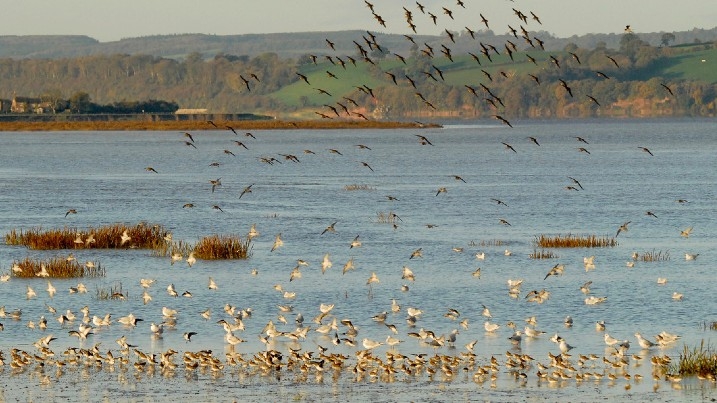
Many plant and animal species thrive in estuaries. Their mudflats and saltmarshes act as extraordinary ‘larders for wildlife’, supporting an abundance of creatures. It’s been estimated that the shellfish and worms found in a single cubic meter of estuary mud can contain as many calories as sixteen chocolate bars.
Because of this, the UK’s estuaries provide the perfect pit stop for wintering and migrating birds. They come to rest and refuel with many staying the entire winter as our mild climate keeps our estuaries free from ice.
At peak times, the Severn Estuary can accommodate up to 100,000 waterfowl and waders.
For migratory fish, estuaries like the Severn perform an essential role, acting as a superhighway, linking breeding and spawning grounds. Shad, sea trout, lamprey and salmon swim up the Severn to spawn, while for the critically endangered European eel it’s a lifeline after their extraordinary 4,000-mile journey to our shores from the Sargasso Sea.
And estuaries give beyond their margins. These rich feeding grounds also boost wildlife in the surrounding landscape, feeding a vast array of animals from fish to frogs, bats to birds. Breeding birds like common tern come to raise chicks in the insect-rich floodplains surrounding the estuary.
At its peak its estimated that almost 320 tonnes of cockles were harvested in the Penclawdd area each month.
Estuaries in our culture and history
Our earliest civilisations developed around estuaries, with their wetlands proving to be great places for people to live and build cities. Around the world, many of our largest cities continue to be found at or near estuaries, including New York, Tokyo and London. The rivers provided freshwater for drinking and agriculture, and easy access to both rivers and oceans helped fuel the development of trade and communications.
Many of the UK’s estuaries have a rich cultural and historical heritage based on the wealth of their natural resources. In the past huge numbers of young eels or ‘elver’ used to arrive on the shores of the River Severn. Many millions were caught by local people who harvested them as a delicacy.
Cockles have been harvested for centuries on the Burry Inlet where WWT Llanelli is sited, providing food and income for generations since Roman times. At its height in the early 19th century, hundreds of pickers – mostly women - could be seen on the sandy flats at low tide. They used hand rakes and riddles and donkeys to help them transport their harvest to market in nearby Swansea.
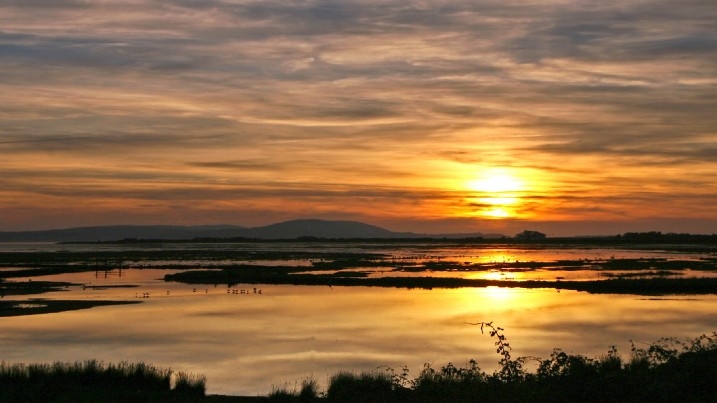
On the Solway Firth, people can still be found trudging out into the murky Solway water using haaf nets, the same traditional method of fishing used since Viking times. It’s a skill handed down through family and friends. It requires an accurate knowledge of sandbanks and tidal patterns as it often involves walking more than a mile out across the Solway river bed to reach the fishing grounds, dodging treacherous sinking sands on the way.
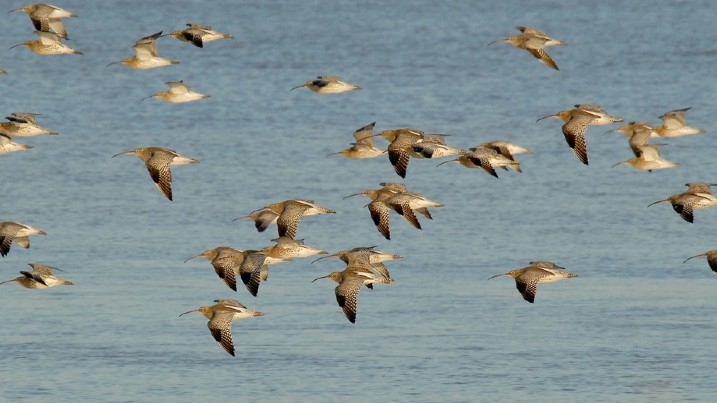
Estuaries and their wildlife have also provided inspiration for poets and writers throughout the ages. From Yeats’ ‘He reproves the Curlew’, to Dylan Thomas’ poem ‘Over Sir John’s Hill’, that celebrates the views over his beloved Taf Estuary in Wales, these extraordinary wetlands have captured people’s hearts and imaginations.
Put together, peatlands and coastal wetlands such as mangroves, saltmarshes and seagrass beds store more carbon than all of the world’s forests combined.
Why do we need estuaries?
Biodiversity
Estuaries are critical for the survival of many species. Tens of thousands of birds, mammals, fish and other wildlife depend on estuarine habitats as places to live, feed and breed. Many commercially valuable fish species depend on estuaries at some point during their life cycle.
Blue carbon
Coastal wetlands like estuaries, saltmarshes, mudflats and sea grasses are very efficient at locking away carbon and are playing an important role in our fight against climate change. This ‘blue carbon’ is a high-density carbon that accumulates in coastal ecosystems as a result of their high productivity and sediment trapping ability.
Pollution busting
The wetlands that fringe our estuaries, perform a vital role filtering out the sediments, nutrients and other pollutants that drain into them from the river catchment.
Flood protection
Estuaries and their wetland plants and soils provide a natural barrier between the land and ocean, absorbing flood waters, dissipating storm surges and protecting us against rising sea levels. At WWT Llanelli the saltmarshes on the Burry Inlet Estuary do an amazing job absorbing vast amounts of energy from waves and tides. Even during the biggest storms and spring tides the seawater still only creeps gently up the marsh, protecting low lying Llanelli from being flooded. At WWT Steart Marshes the saltmarshes on the shores of the Severn Estuary do a similar job preventing the ocean’s waves from eroding the shoreline and destroying coastal homes and businesses.
Recreation
Estuaries provide us with many leisure opportunities from boating and fishing to swimming, windsurfing and bird watching. Research by WWT also shows that being around these unique coastal environments is fundamental to our mental health and wellbeing.
Economic
Tourism, fisheries and other commercial activities thrive on the wealth of natural resources our estuaries supply. Estuaries also serve as important harbours and ports, vital for shipping, transportation and industry.
Estuaries in the UK and around the world are under extreme pressure, at risk from land reclamation, pollution, overfishing and rising sea levels due to climate change.
Estuaries under threat
WWT is protecting the wetlands in and around estuaries, in the UK and worldwide. The Severn Estuary provides an important gateway for migratory fish. But industrialisation has modified the river greatly, created barriers, increased pollution and altered water levels. This has led to a dramatic drop in the numbers of fish able to access the River Severn and its surrounding waterscape. Our aim is to reconnect these wetland waterways and breathe new life into the area.
Abroad, much of our international work focuses on protecting key estuary sites on migratory flyways, such as the Targus estuary in Portugal.
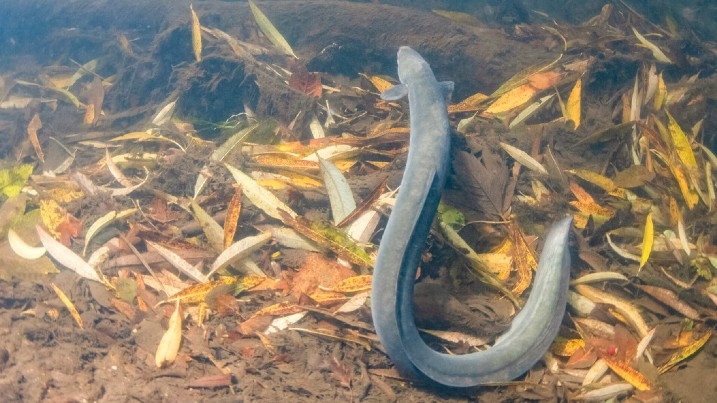
You might also be interested in
WWT creates, protects and restores wetlands for wildlife and people, including estuaries, at our sites across the UK and internationally
Support WWT